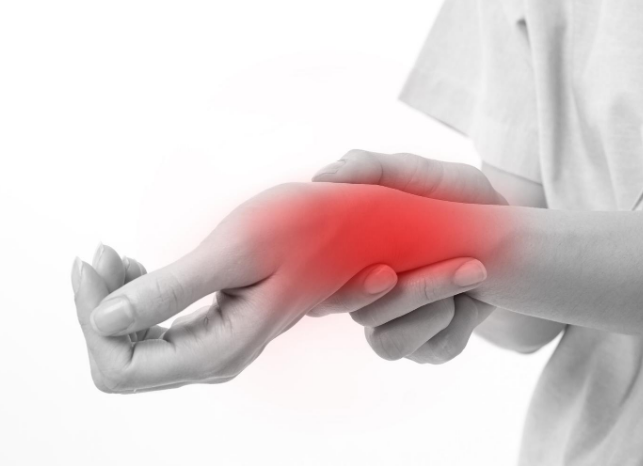De Quervain’s is a condition which affects your wrist at the back of your thumb. The two tendons involved are in the back of your thumb called your Extensor Pollicis Brevis and Abductor Pollicis Longus. These tendons help to move your wrist inwards (if for example, waving hello) and help to extend the thumb outwards (giving a thumbs up). Where these tendons cross the wrist and enter the thumb they pass through a tunnel, or sheath, which helps to hold them in place. This tunnel normally has a slippery coating which allows the tendons to slide back and forth as you use your thumb. Overuse or a sudden increase in activity can cause friction between the two surfaces which results in inflammation and swelling of the sheath and tendons. This in turn leads to pain and loss of function of the thumb. As such, De Quervain’s tends to present with pain on the inside edge of your wrist with thumb with wrist movements. In more advanced cases you may hear or feel a creak from the friction as the tendon slides through the sheath.

A simple test which helps to diagnose De Quervain’s tenosynovitis is called the Finkelstein’s test which involves making a fist with your thumb on the inside of your fingers and then slowly bending your wrist away from your thumb. If pain is experienced at the base of the thumb the test is positive for tenosynovitis.
Treatment for De Quervain’s initially includes:
- rest from the aggravating activity
- splinting the thumb to prevent movement of the tendons
- anti-inflammatory medications
- soft tissue massage
Treatment will progress to:
- gentle stretching of the muscles in the forearm
- a progressive strengthening program to improve load tolerance of the tendons and prevent recurrence



